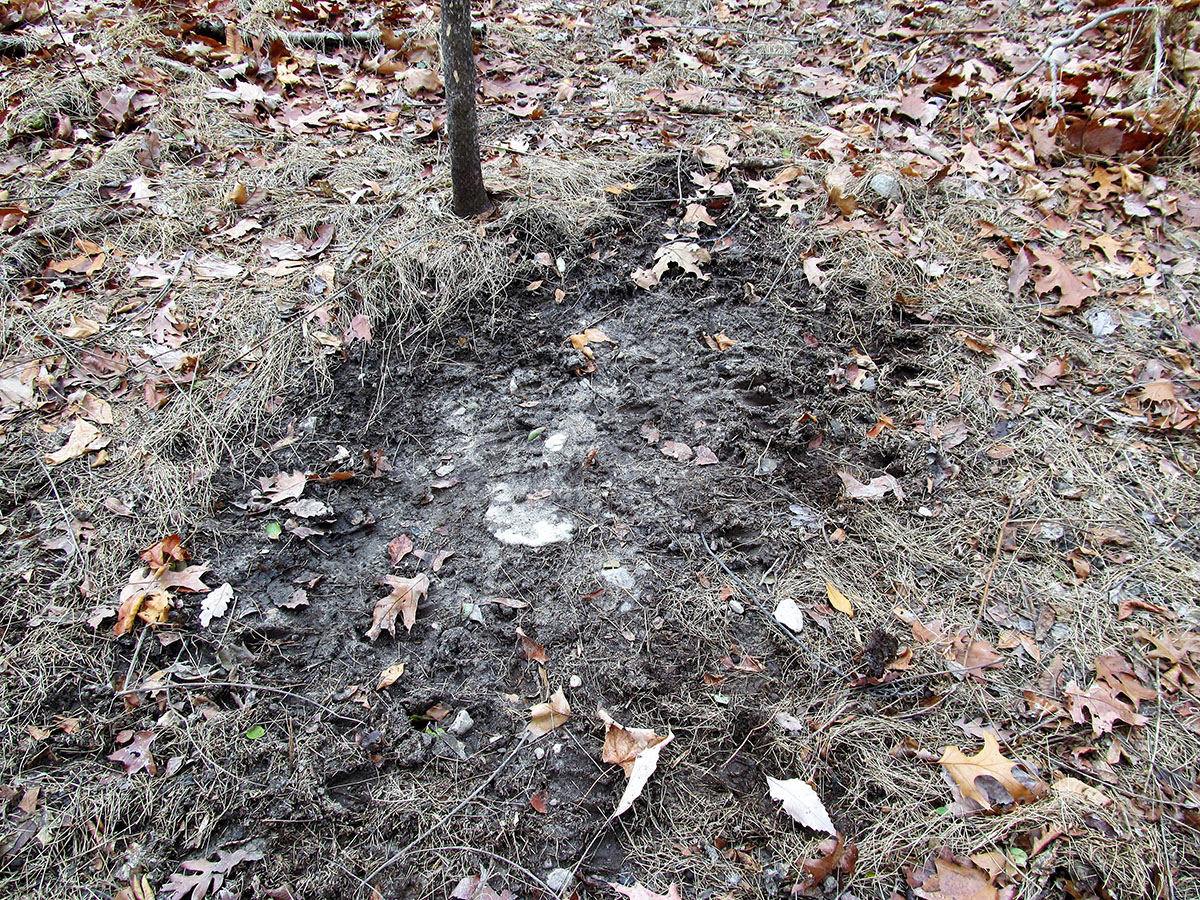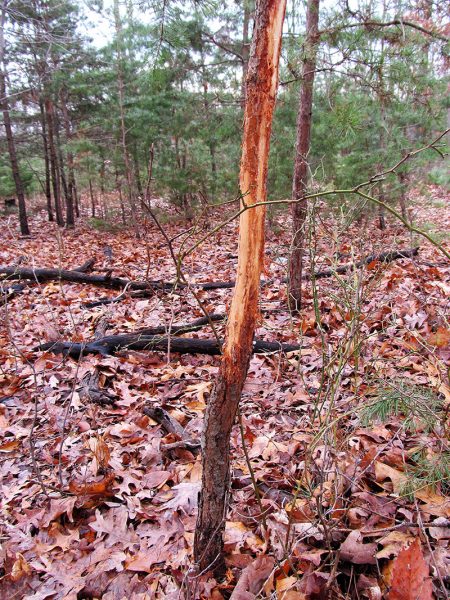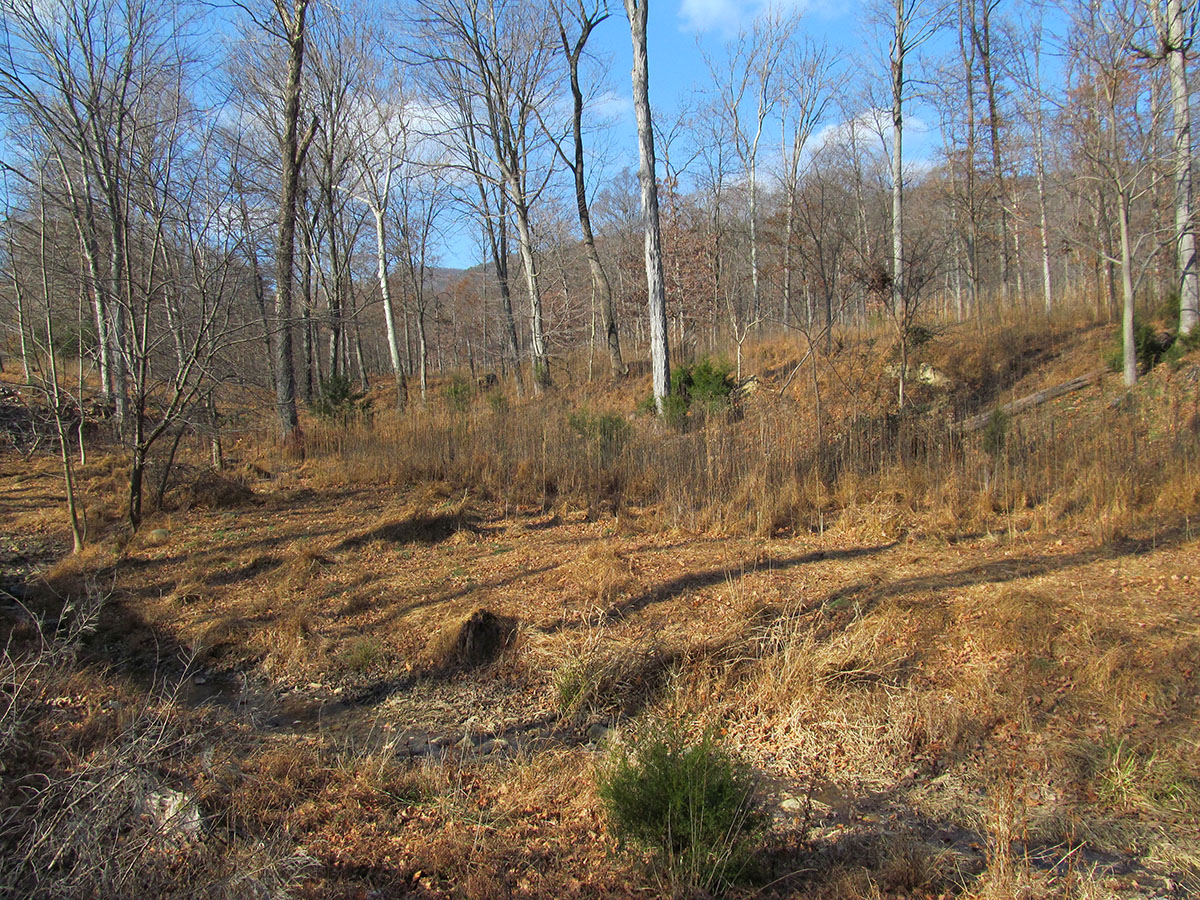
By Gerald Almy
Photos by Gerald Almy
Ask hunters when the best time to scout deer is and most will say late summer. But if you really want to do some valuable advance field work before hunting seasons arrive, hit the woods now with topo map, satellite photo, pen, and pad in hand or one of the new hunter apps. Late winter is by far the best time to gather information that will help you harvest a buck this fall.
The next few months offer a rich opportunity to find out crucial details about the travel patterns, core areas, escape routes, rub lines, food sources, and bedding spots of your local deer herd. This is also the perfect time to expand your hunting territory by checking out a few new spots to try next fall.
With most leaves gone, cover is sparse so you can get a clear picture of the habitat, topography, and sign. And you don’t have to worry about bumping a good deer now, like you would close to hunting seasons in fall. Spook a buck in January, February or March and he’ll settle down and return to his normal patterns well before opening day arrives.
Most hunters find that post-season scouting also lifts the spirits. The end of hunting always comes as a psychological letdown, so jumping right back into the deer woods is a nice way to assure oneself that next hunting season isn’t far away.
It’s a relief to finally not have to sit stolidly on stand without moving a muscle, not daring to walk in certain core areas for fear of pushing out a mature buck. Now you can lay down some tread work, cover ground, and really learn your hunting territory intimately.

Check out that thicket and honeysuckle patch you were afraid to disturb. Investigate that trail leading to a dense cluster or briers and brambles. Now you can see if they do, in fact, show large beds and fresh droppings. Follow that rub line without fear of encroaching too close on a buck’s sanctuary. At this time of year you have the freedom to fully explore your hunting territory with impunity. Take advantage of it.
 Look for Sign
Look for Sign
Important types of deer sign such as rubs, trails, beds, scrapes, and licking branches are easy to locate now with vegetation sparse. Don’t be content to just find a hodgepodge of sign, though. Record important information in a notebook or on your topo or hunting app and use it later to try to unravel buck movement patterns.
Mark major and minor trails, rubs, scrapes, beds, feed areas, old home sites, fallow fields, clearcuts, areas where the browse is nipped down, and places where you jump deer or find shed antlers. You might decide from your scouting that moving your stand just a few hundred yards would put you in a core travel or breeding area, or a totally new spot might be more promising.
Try to keep the big picture in mind. Feed areas will stand out clearly such as corn, alfalfa, wheat, or oat fields, as well as orchards and areas with large, mast-bearing oaks. Also look for fruit trees such as apple, plum, persimmon, and pear.
Areas with secondary foods such as honeysuckle, greenbrier, grapes and other shrubs and saplings should also be noted. These are foods that deer nibble on as they move between major feeding and bedding areas. Such transition zones are often hot stand sites.
Find the Way
Trails are easier to see after leaves have fallen and they’ve been trod on all autumn and winter. Look for areas where spokes of trails from feed areas join more prominent paths as they approach bedding areas. Also look for thinly-outlined trails where big bucks might travel in thicker cover 30-80 yards to the side of the major travel routes used by does and small bucks.
Rubs are easier to find now than in autumn when trees are leafed out in gold and yellow foliage. Look for larger ones on wrist-sized trees to indicate a mature buck is in the area and try to follow his travel route by where he has marked other trees. Also look for scrapes with broken licking branches above them. Chances are bucks will make others nearby this fall or return to use those.
Also search for escape cover—thick vegetation, swampy areas, or high, rugged terrain where most people won’t venture. Those are the spots bucks will head to when hunting pressure gets heavy. Note where major pull-off or parking areas are and pre-select stand sites between these and the escape cover.
Funnels—places where a buck’s movement is constricted through a narrow passage–stand out well in winter. These can be places with steep topography, a strip of woods joining two fields, a shallow spot in a river, a saddle in a ridge, or other physical features that encourage deer to travel through a certain spot.
Once you’ve located several of these, check them out more carefully and try to identify an even tighter constriction spot within that funnel, where the deer are channeled through an even narrower channel. That will make an outstanding site for a bow stand.

Take Notes!
Make a note or mark on your topo where you see deer and the time of day. Bucks will have dropped their antlers, but you can often tell a mature buck by his body size. Write down whether the deer was bedded or traveling. If he was traveling, note the direction he was headed.
With a notebook full of observations, a well-marked topo, or an app loaded with data, you can sit back and analyze your findings. Often the top stand sites will be obvious.
Pinpoint good blind sites or trees to use a portable stand in later and trim branches that might be in the way. You can even clear a trail to reach the stand so you won’t make a lot of noise when you approach. This may have to be spruced up again a bit just before the opener, but no loud equipment should be required at that time.
As antlers begin to form during summer it’s time to begin long-distance scouting with binoculars, watching bucks in fields and open areas. This is also the time to place trail cameras in strategic areas to monitor antler development on bucks, pin down travel patterns, and monitor doe family groups.
Just before bow season make one or two low-impact, midday forays. Hang stands, re-clear trails to reach them, and check quickly for fresh sign in the areas you pinpointed during post-season scouting trips.
After that you can sit back and wait for the opener—confident and prepared.
Gerald Almy lives in the Shenandoah Valley but travels widely for his work as a fulltime outdoor writer. His is currently a columnist for Sports Afield and a contributing editor for Field & Stream.


